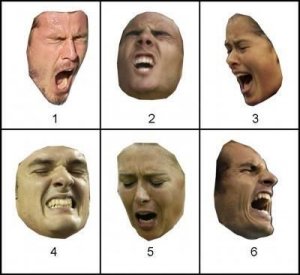
All iLive content is medically reviewed or fact checked to ensure as much factual accuracy as possible.
We have strict sourcing guidelines and only link to reputable media sites, academic research institutions and, whenever possible, medically peer reviewed studies. Note that the numbers in parentheses ([1], [2], etc.) are clickable links to these studies.
If you feel that any of our content is inaccurate, out-of-date, or otherwise questionable, please select it and press Ctrl + Enter.
A person's emotions can be determined by body language, not facial expressions
Last reviewed: 01.07.2025

Researchers from the Hebrew University of Jerusalem, New York University and Princeton University have found that the conventional wisdom that a person's facial expressions can tell a lot is not entirely true.

Experts say that it is body language, not facial expressions, that gives a complete picture of the emotions a person is experiencing at the moment.
The results of the experts' research were published in the journal Science.
Previous studies were based on professional actors portraying a particular emotion, and scientists analyzed the audience's reaction. However, such experiments have little in common with reality. These experiments use "purified" emotions: the actors' facial expressions are photographed and the photo is shown to the participants of the experiment. The difference is that a normal person's face can reflect a large number of emotions, and facial expressions can change very quickly, especially during moments of strong emotion.
A team of scientists conducted a slightly different kind of experiment. The specialists used photos of tennis players that were captured at the moment of defeat or victory. The students, who took part in the test, had to determine what the athletes' faces were expressing, grief or joy. The students had to rate the emotions on a nine-point scale. However, not everything was so simple. One group of participants was shown full-length photos, while others were shown only the tennis players' faces.
As a result, it became clear that those who were shown photographs with a face made mistakes in identifying emotions more often than those who could recreate a complete picture of a person’s feelings using a full-length photograph as an example.
This means that facial expression alone does not give a complete picture of what a person is experiencing. In addition, participants focused more on body language, even when a sad expression was “attached” to a body expressing joy.
The survey of students also revealed that they focused not on the face, but on the palms, closed or open, that is, on the body language.
Scientists conducted other experiments with other photos. The results confirmed their theory: to understand what a person is feeling at the moment, you need to look at what the whole body is expressing, not just facial expressions.

 [
[